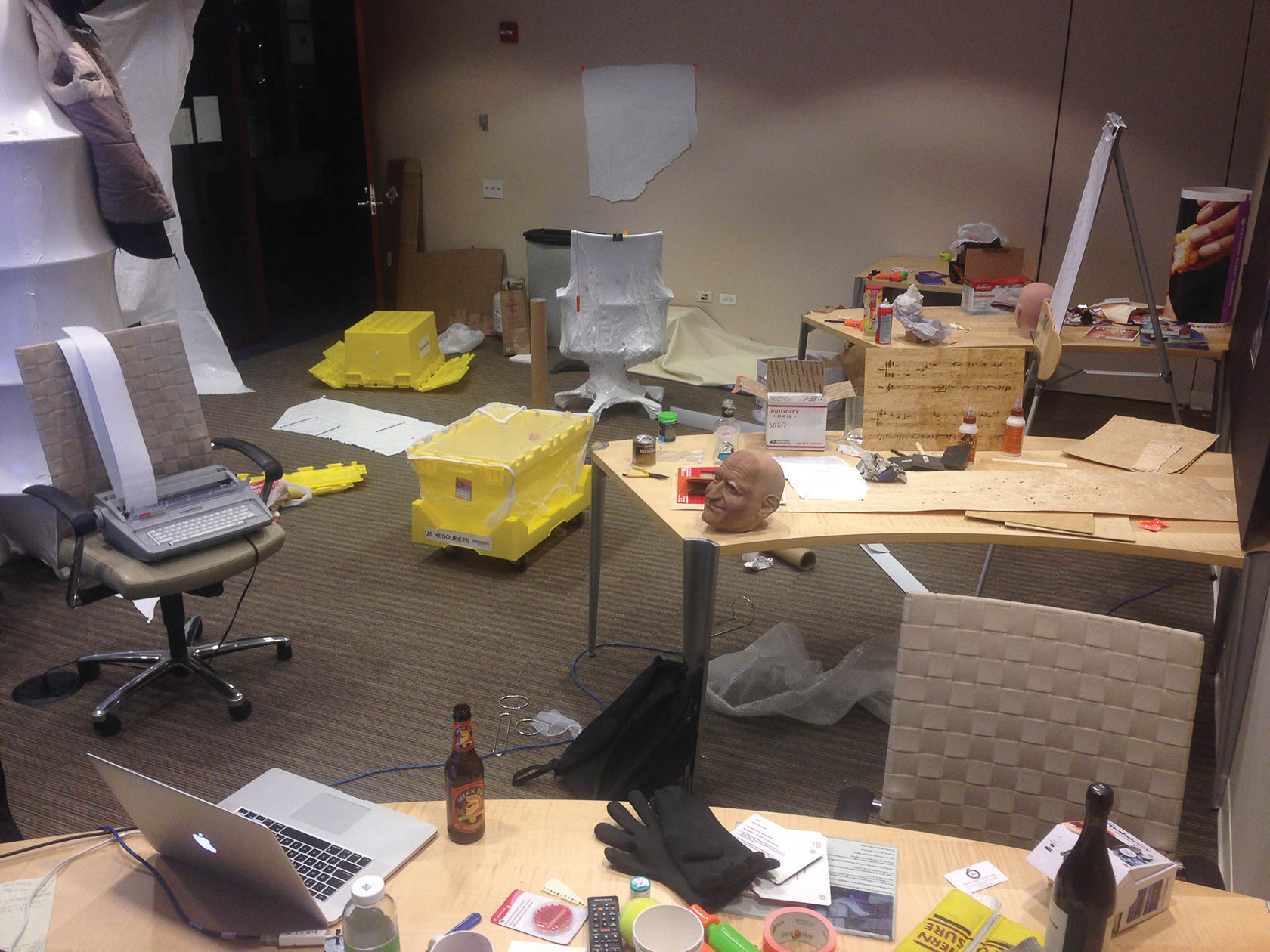During January and February of 2015, I was an artist in residence at the corporate headquarters of the media communications agency Starcom MediaVest Group in the Leo Burnett Building in Chicago, Illinois. The program was initiated by CEO Laura Desmond with Ben Foch and Chelsea Culp of New Capital.
The CEO has a motto, one that is common within companies that take a “disruptive” approach to their industries: “Ask forgiveness, not permission.” Somehow this motto trickled down to me—a temporary non-employee—when I asked her executive assistant (my primary liaison) if I could breed mosquitos in the office. Though the corporate hierarchy was intricate and veiled, I not only felt more autonomy from it than expected, I was barely instrumentalized toward any concrete goals. The CEO never made herself available to meet with me.
I’m finding it difficult to explain what happened there, as it was all too quick and overstimulating to process. I had lived in Chicago before, but this was a different Chicago—the Chicago in the sky that sought to get Marlboro, McDonalds, and Coca-Cola into every body in America and to mobilize those bodies with General Motors, Pfizer, and Hallmark Cards. I had 24-hour access to all 10 of the company’s floors in the building and exposure to thousands of employees. I lived directly across the river from the office in Bertrand Goldberg’s Marina City. Every day—weekends included—I would take an elevator down from my apartment on the 38th floor of Marina City, walk across the bridge over the river, and take an elevator up to my large office on the 32nd floor of the Leo Burnett building. The rigor of this routine, which also included an hour a day at the gym, seeing friends only on weekends, and eating pistachios every night while looking out onto the city through my apartment’s transparent wall, felt necessary amidst the chaos of starting on too many ideas with not enough time.
A research-based project within this timeframe was both impossible and undesirable. It felt like the settlement of an artistic frontier—reacting to the environment quickly, grabbing whatever corporate resources I could get my hands on, and constructing often without permission. At night my freedom blossomed, after the thousands had vacated the tower. It was then I could use a 200,000 BTU blowtorch to melt industrial heat shrink-wrap in my office. Or have a date with a former Disney on Ice star turned art student. A few times I fell asleep there. Yet it wasn’t totally empty. A member of middle management who often stayed late would happily field my questions about his time as a Scientologist. One of the guards was autistic, and I would give him all the free company Apple Jacks he wanted to critique my work. And the custodian who cleaned floor 32 every night would stand in the doorway of my studio and ridicule me, in jest, for working late hours to make “a bunch of nonsense.”
My liaisons—which included the executive assistant to the CEO—were part of a committee organized especially for me. They were immeasurably helpful and, as one would expect from a voluntary artist-in-residence committee, curious. But because an exhibition had to be made, I barely had enough time to casually talk to people, and they seemed to have even less time for me.
My hope was to emphasize the “raw footage” of life that is typically edited out of these climate-controlled, brand-focused corporate offices: non-human life forms, processes of decay, atypical subjectivities, and uselessness. I’m not quite sure what effect this all had, because my former committee seems too busy to deal with what is effectively an optional survey to them.
The following pages started with documentation of work made in the office, and ended up becoming interpretations of the works in hindsight. My friend Nick Bastis joined me for my first few weeks in the office, and we collaborated on the work seen in numbers 2 and 3.
1. Belief Systems and the Conquering Gaze from Nowhere
2. Status Anxiety and the Individual
3. Autistic Perception and the Form of Sense
4. Unfixed Spacetime and the Imprints of Experience


